PureInsight | May 21, 2023
[PureInsight.org]
"Han-Tibetan Civilization Pyramid" on the Snowy Plateau
The Dulan Ancient Tomb is located in Reshui Township, Dulan County, Haixi Mongolian-Tibetan Autonomous Prefecture, Qinghai Province, at the southeastern end of the Qaidam Basin. In history, it was the political, economic, and cultural center of the TuYuHun ancient kingdom, and also an important relay station on the ancient Silk Road.
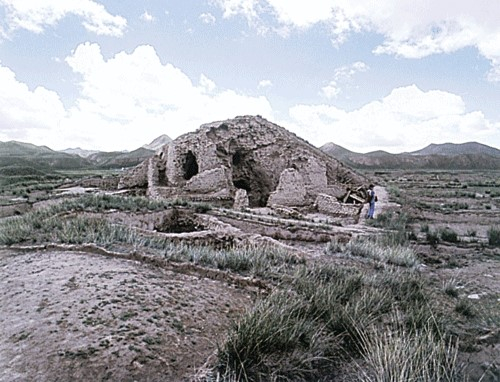
The Tuyuhun people were a branch of the Liao Dong Xianbei tribe. In the 4th century AD, they migrated to the southern grasslands of Qinghai. In 329 AD, the Tuyuhun people established their own kingdom with Qinghai as the center, and made Dulan their capital. In 663 AD, the Tuyuhun regime was destroyed by the Tubo Kingdom and became a vassal state of Tubo.
The Tuyuhun Kingdom established its capital in Dulan County for 271 years (417-688 AD). Within a range of over 200 kilometers from Xiariha to Balong in the county, there are more than 2,000 ancient tombs of various sizes, with over a thousand tombs dating back 1500 years. Within just one kilometer long range of Reshui Gully, located about 10 kilometers away from the county, there are over 200 ancient tombs.
In 1982, an archaeological team accidentally discovered the Reshui Tubo ancient tombs, also known as the "Han-Tibetan Civilization Pyramid". The tombs, which looked like towering city walls from a distance, were magnificent and spectacular. The tomb structures had a unique style that was unparalleled in Chinese archaeological excavations. According to experts, it would have taken more than 10,000 strong laborers more than a year to construct the largest tomb among them, which is a testament to the creativity of ancient people and is truly astonishing.
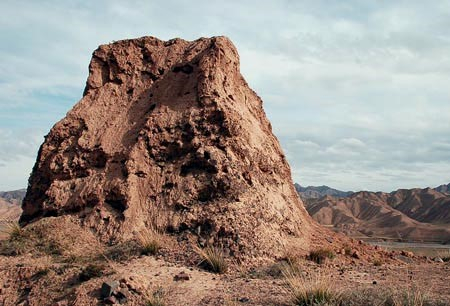
The Blood Wei No.1 Tomb
Starting from 1982, large-scale salvage excavations were carried out on the Dulan ancient tombs. The Tuyuhun Kingdom was a rather mysterious ethnic group in Chinese history. Its existence lasted only a short 300 years. However, there are not many records about this ethnic group in historical books, and physical evidence is currently scarce. The excavation and research of the Dulan ancient tombs have revealed and interpreted many historical mysteries. Among these tombs, the Blood Wei No.1 Tomb is particularly noteworthy.
In the excavation of the Tubo tombs in Dulan, the "Blood Wei No.1 Tomb" is considered the most amazing discovery by archaeologists, and it is also the most spectacular tomb among all the tombs. Its structure is unique, facing north and south, with a height of 33 meters, a length of 55 meters from east to west, and a width of 37 meters from north to south. The bottom of the sealed mound is built with three layers of hard stone walls, and on top of that, there are three layers of rammed earth, sandstone layer, and a layer of mud and stone mixture to reinforce it. Under the mound, there is a wall made of mud and stone mixture. About every meter, there is a layer of neatly arranged and similarly sized cypress trees. Nine layers of cypress beams are stacked from top to bottom, and the local farmers and herdsmen call it the "Nine-story Monster Tower". From the front, it looks like a "gold" character, hence the name "Dulan Tomb of the Eastern Pyramid."
The two mountain ranges behind the large tomb extend from the east and west respectively, like two giant dragons, while the tomb itself resembles a precious pearl between the two mountain ranges, forming a "two dragons playing with a pearl" pattern.
Archaeologists only excavated the first two layers of the tomb, unearthing a large number of burial objects and over 700 animal remains, including horses, cows, and sheep. Therefore, the Dulan tomb complex has extremely high academic value for the study of the history, culture, and customs of the Tuyuhun people.
The Dongshanzui and Niuheliang Cultural Sites
From 1979 to 1985, archaeologists discovered large-scale altar, goddess temple, and stone mound (small pyramid) sites in Dongshanzui Village, Kalachin Left Wing Mongolian Autonomous County in western Liaoning, as well as in Niuheliang Village at the junction of Lingyuan and Jianping counties. They unearthed many astonishing artifacts.
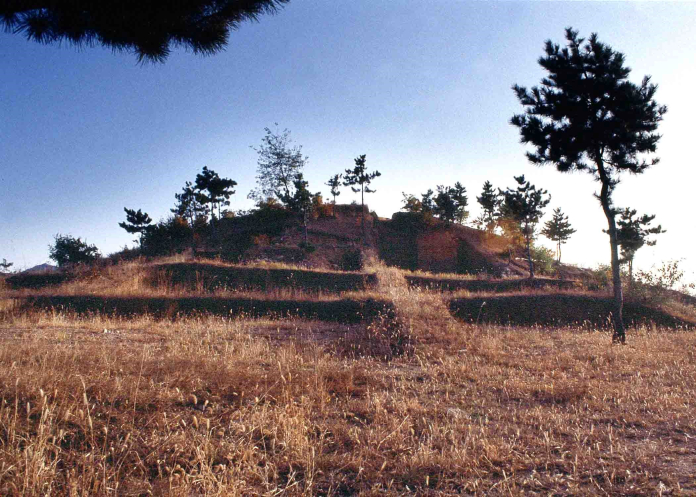
According to carbon-14 dating, the site is estimated to be 5500 years old. Based on the preliminary analysis of the unearthed artifacts, it is believed that a primitive civilization with the embryonic form of a state once existed there. This means that the history of Chinese civilization is pushed back by over 1000 years, which has caused a sensation around the world.
The layout of the altar, temple, and tomb in the Dongshanzui and Niuheliang cultural sites covers an area of about 50 square kilometers. This "triple-in-one" layout symbolizes the circular and square altars of "heavenly round and earthly square". The architecture is distributed along the north-south axis and is symmetrical. The goddess temple has a main room and a side room, with a huge main deity and many gods and stars. The piled stone tombs are built on hilltops or small hills, similar to the Ming Thirteen Tombs.
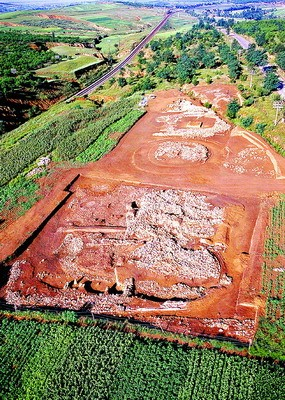
In 1989, archaeologists confirmed through excavation that a pyramid had been found near the Goddess Temple. The pyramid is cone-shaped with a small top, made of rammed earth. The diameter of the earth pile on the ground is nearly 40 meters, and it is 16 meters high. The outside of the earth pile is wrapped in huge stones, and the inner stone circle has a diameter of 60 meters, while the outer stone circle has a diameter of about 100 meters. There are three circles of stones on top of the earth pile, and each layer of stones is set back 10 meters and is 1 meter high. There are also three circles of stones surrounding the bottom of the pile.
There are over 30 small pyramids on the surrounding hills around this large pyramid. The entire pyramid complex is conical in shape, with a pointed top. The layout of these small and large pyramids is similar to that of the ancient Egyptian pyramids. Could this be just a coincidence? What were these pyramids used for?
Does the Niuhe Bridge Site Prove that Nüwa Really Existed?
According to reports, the artifacts found at the Niuhe Bridge site are all related to the legend of Nüwa, to the point where some archaeologists believe that Nüwa really existed and that events such as Nüwa repairing the sky really happened.
A complete clay statue of a life-sized goddess head was unearthed in the female temple, along with six different-sized fragments of clay statues of female nudes.
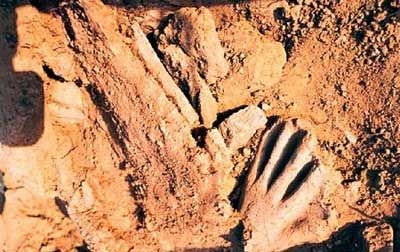
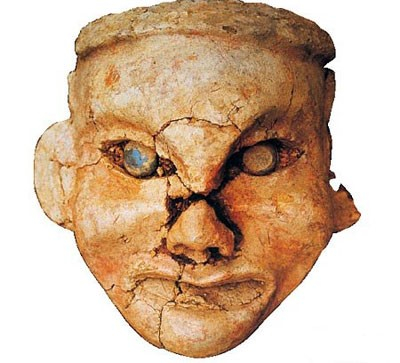
Experts suggested that the colored clay statue of the goddess has artistic value comparable to the Venus of the West. The hollow cavity inside the upper arm of the unearthed goddess sculpture contains bones, which may have been human bones that were burned and mostly turned into ashes. Experts speculate that the Niuhe Bridge goddess statue may have been modeled based on a real person. It allowed hundreds of millions of descendants of the Chinese nation to see the image of their ancestors, who were modeled with yellow soil, for the first time 5000 years ago.
It is reported that when these "Chinese pyramids" were first discovered, the top of the "pyramid" was a copper smelting site with 1,500 red copper crucibles. Each crucible was about one foot tall and had a mouth about 30 centimeters in size, similar in size to modern water buckets. What exactly were these artificially constructed "pyramids" used for? And what was the purpose of the 1,500 crucibles for smelting? Were they really used by Nüwa to smelt the five-colored stones?
Archaeologists have excavated a large number of jade artifacts from the small pyramid complex around the Great Pyramid. In the central tomb of one of the mounds, a complete male skeleton was unearthed, with a pair of jade turtles clasped in each hand, one male and one female, matched in pairs. The jade turtles were seamless, without heads, tails, or legs, as if they were a single entity. This matches the legend of "using a broken turtle to support the four poles" during Nüwa's mending of the sky. The headless, tailless, and legless jade turtles are also consistent with the mythological legend.
The Inner Mongolia Pyramid Built 5000 Years Ago
In July 2001, Chinese archaeologists discovered a "pyramid" in Sijiazi Town, Aohan Banner, Inner Mongolia Autonomous Region, which is over 5000 years old. Archaeologists in mainland China have found that this is the most complete pyramid from the Hongshan Culture period that has been discovered so far.
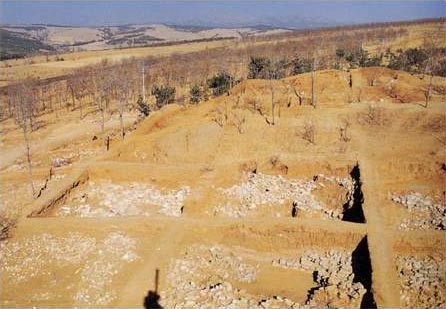
The pyramid is located on a hill about one kilometer north of Sijiazi Town and appears as a trapezoidal small hill from a distance. Upon closer inspection, it is a three-layered stone-built tower-shaped structure, with the bottom layer measuring about 30 meters long and 15 meters wide. The tower walls are built with stone blocks and the center is packed with soil, with each layer gradually stepping back to form a huge stepped circular cone with a total area of 50,000 square meters.
Seven tombs and an altar were found at the top of the pyramid, and scattered throughout the site were pottery fragments with the character "米" (pronounced Mǐ, meaning “rice”) engraved on the inner walls, which may be related to ancient people's understanding of astronomy. Artifacts excavated from the seven tombs include a bone flute, a stone ring, and a complete and intact statue of a goddess.
Hongshan Culture is a Neolithic culture in mainland China, dating back to about five to six thousand years ago. It is mainly distributed in the border area of Inner Mongolia and Liaoning, Hebei, and Jilin provinces. The "Hongshan Pyramid" is one of the oldest giant buildings in the world.
The Zangkunchong Step Pyramid
The Zangkunchong Step Pyramid is located in Ziban, with a base of 31.58 x 31.58 meters and a height of 12.4 meters. It is currently located within China. It faces KukNae Castle, towards the southwest, and has twelve stone slabs, the largest of which is 2.7 meters long and 4.5 meters high, leaning against the bottom steps. There are four guardian stones, like stone gateways, with the lower parts well-preserved. It is called "Paechong," meaning a guardian tomb in Korea.
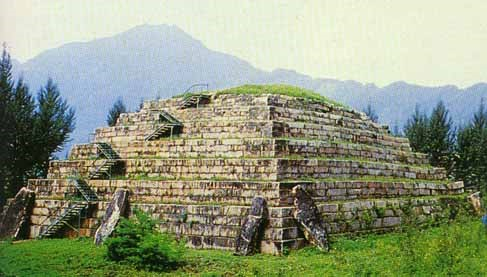
According to speculation, this was built during the Kokuryo period, around 500 AD, but no one knows who the tomb owner was. It is said that one of the stone tombs belonged to the 19th generation king, King Kwangkaeto (371-384 AD), but now it is a damaged stone pyramid.
The Unfinished Great Pyramid in Fuzhou, Jiangxi Province
In March 2010, a large mysterious "pyramid" structure was discovered on a mountain over 1000 meters high in Fuzhou City, Jiangxi Province, China.
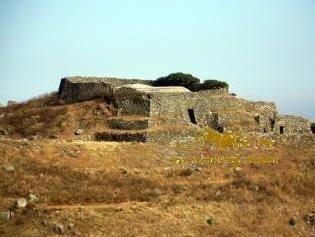
The pyramid site is located on a mountain peak with an altitude of 1214 meters beside the main peak of Xiangshan, in Chongren County, Jiangxi Province. To the southeast, there is an arc-shaped mountain wall that is 40 meters long. The entire building covers an area of over 5000 square meters and is as large as a palace. However, its age and function are yet to be verified.
The main body of the building is square-shaped, with a width of 32 meters and a length of 35.4 meters on each side. The wall is 4 stories high, with each level having a wall thickness of 1.5 meters, and the upper layer is recessed 1.2 meters compared to the lower layer. The entire building is constructed from huge stones and is in the shape of an unfinished pyramid.
The report says that in the middle of the building, there is a stone gate made up of several large stones, 6.6 meters in height, with four strange combined characters carved on it. After careful identification, archaeologists confirmed that the four combined characters from left to right are "Dao An" (Road shore), "Ba Ling" (Ba Ridge), "Tian Gong" (Heaven and earth together), and "Xiang Shan" (Mutual mountain).
In addition, about 700 meters away from the mysterious building, archaeologists also discovered a building with a similar style, located on the main peak of Xiangshan, at an altitude of 1224 meters, with an area of about 1600 square meters, all made of stone.
Both of these massive sites, built with stones and without the use of mortise and other adhesives, blend with the surrounding natural environment, which is puzzling.
Yuxi's "Underwater Pyramid" in Yunnan
In 1992, a professional diver accidentally discovered a stone building site underwater, which led to the discovery of the underwater ancient city site in Fuxian Lake. On June 16, 2006, another contact was made with the mysterious underwater architectural ruins in Fuxian Lake, in the hope of finding some answers to the many mysteries of the underwater relics.
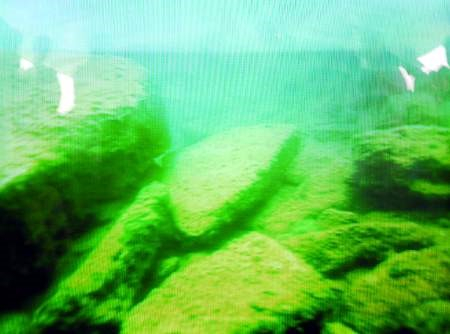
Fuxian Lake in Yuxi, Yunnan is the second largest freshwater deep lake in China, with an area of 216.6 square kilometers. In recent years, a "submerged ancient city" has been discovered at the bottom of the lake. Is the 2.4 square kilometer underwater site an ancient city of the Dian Kingdom? What does the ancient architectural complex mean?
One of the buildings in the ancient city is a tall, three-tiered, stepped structure that follows the traditional north-south orientation of ancient China, with a higher eastern side and a lower western side. The three tiers are evenly symmetrical with well-proportioned steps from east to west.
Another grand staircase-like building is a giant "pyramid" stone structure, 19.9 meters high and with a base length of 90 meters. The top of the pyramid is flattened, and there are differences in the stones used. The first to fourth layers are made of high-hardness bluestone, and the stones are relatively rough and connected with some kind of adhesive. The fifth layer uses a large amount of polished and relatively regular red sandstone.
It is divided into 5 layers, with the first layer having a bottom width of 63 meters, the second layer 48 meters, and the third and fourth layers collapsed and cannot be accurately measured. The fifth layer is 27 meters wide. The entire building resembles a Maya pyramid, with small steps connecting each large step between each layer. The first large step has a straight small step that leads straight up from the bottom.
At the bottom of Fuxian Lake, there are nine other large buildings similar to this one. Archaeologists have discovered that the red sandstone at the top of the tower is arranged in some special shapes and carved with various patterns and symbols. Preliminary inference suggests that these grandiose, giant high-altar style buildings are the crystallization of a certain high civilization, and are likely to be places of worship.
There have been astonishing discoveries underwater as well. When divers cleared away the white layer on the stones, they found symbols similar to the "0,1" binary code, with "0" representing the sun and "1" representing the horizon. Symbols are the predecessors of writing, and the discovery of "0" today is a major breakthrough. Experts have called it "miraculous"! It is possible to push the age of underwater ruins forward to 4,000 years ago due to this symbol.
To be continued.
Chinese version: https://big5.zhengjian.org/node/75982
